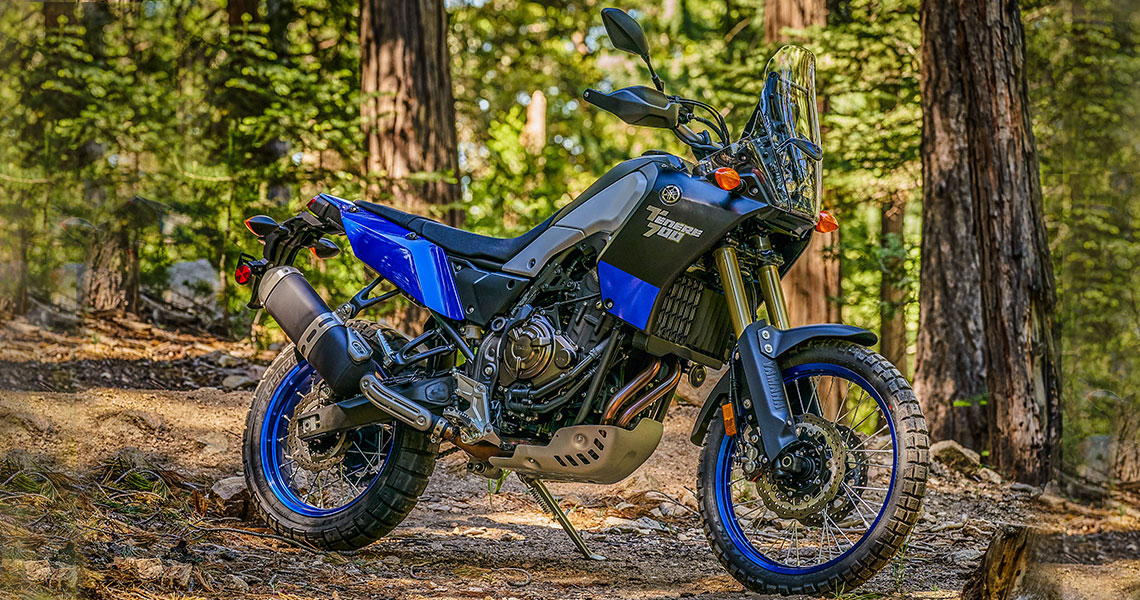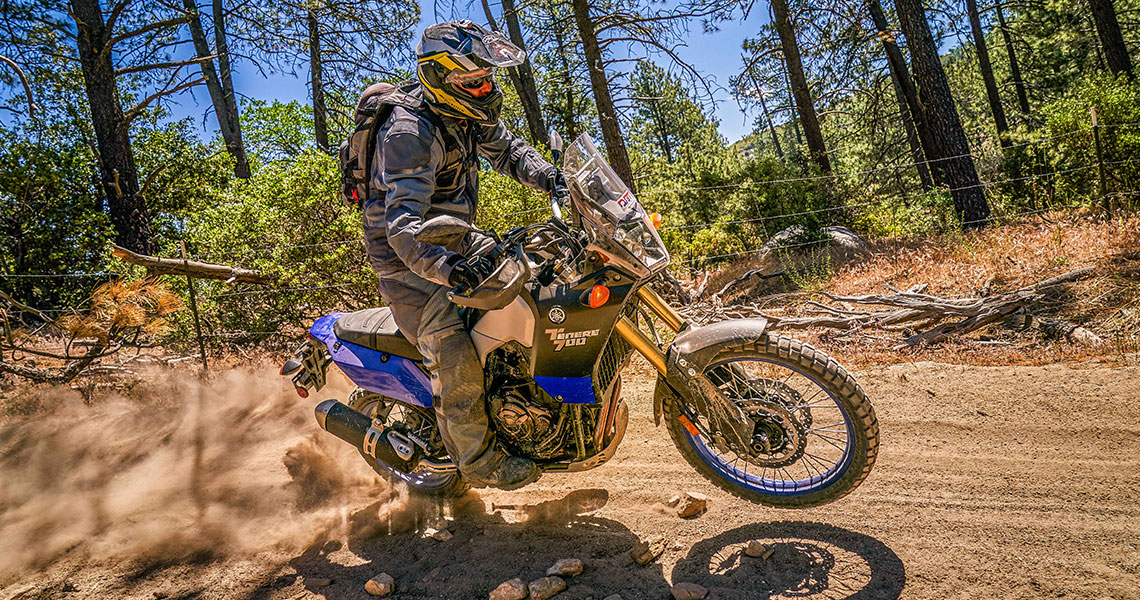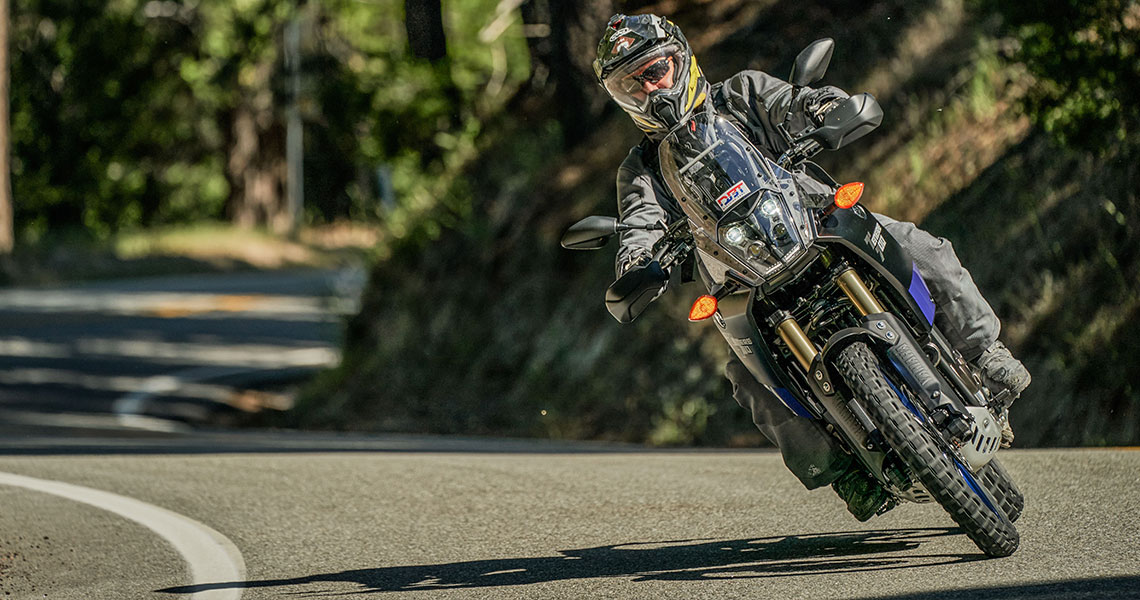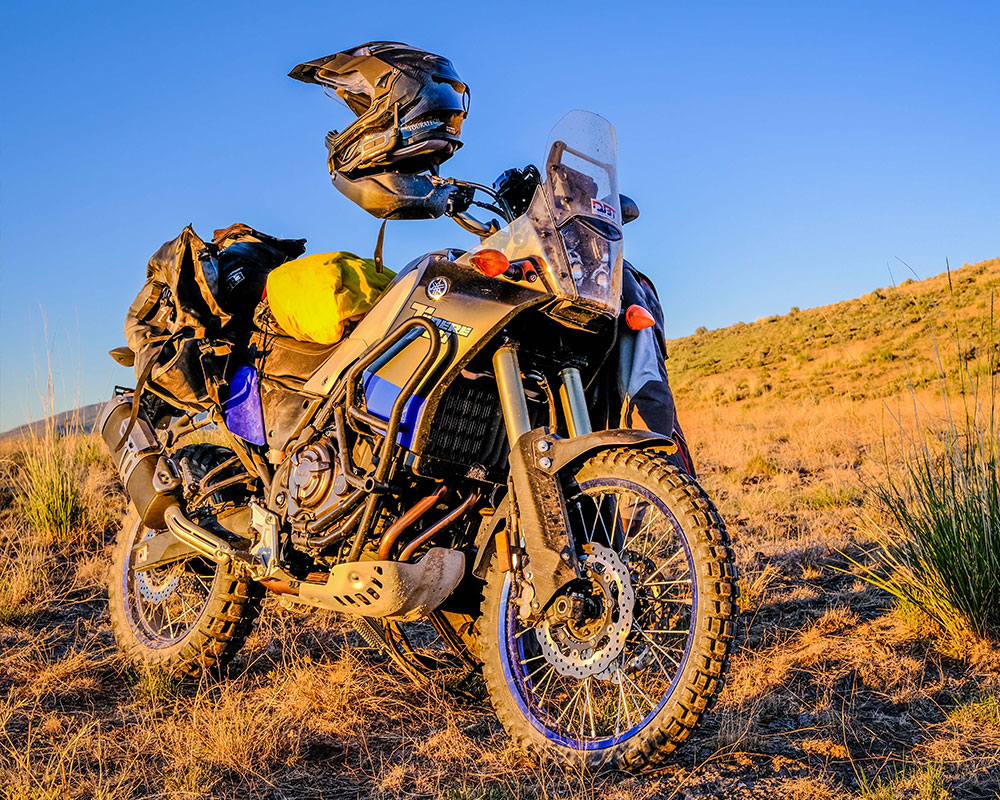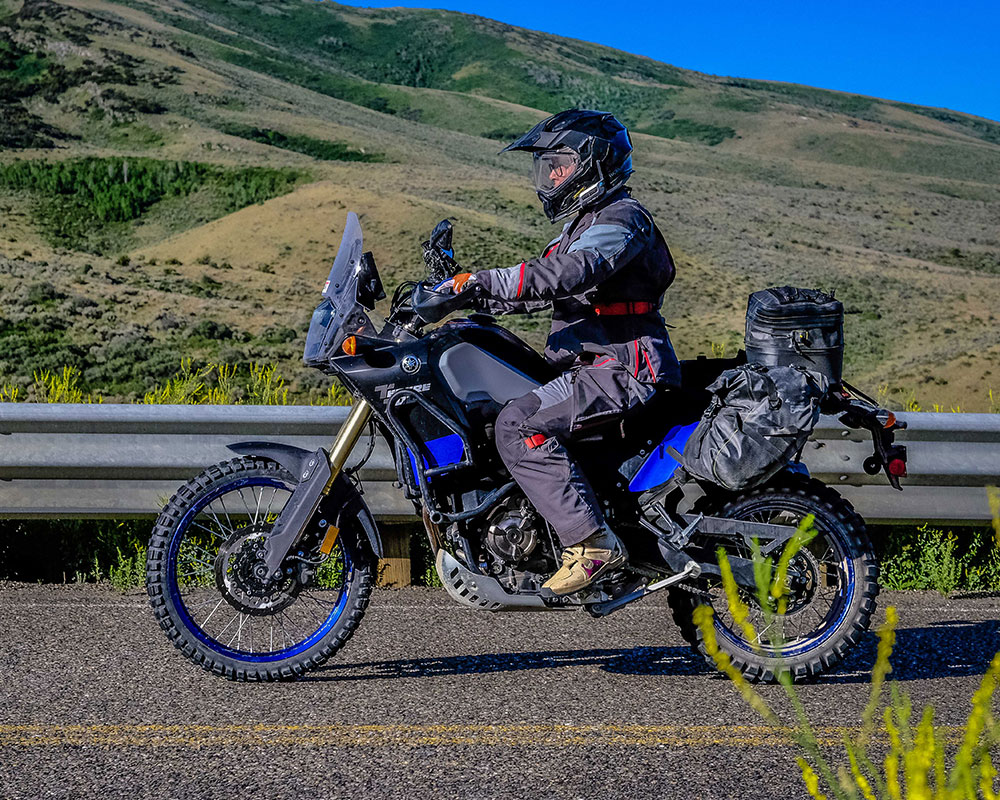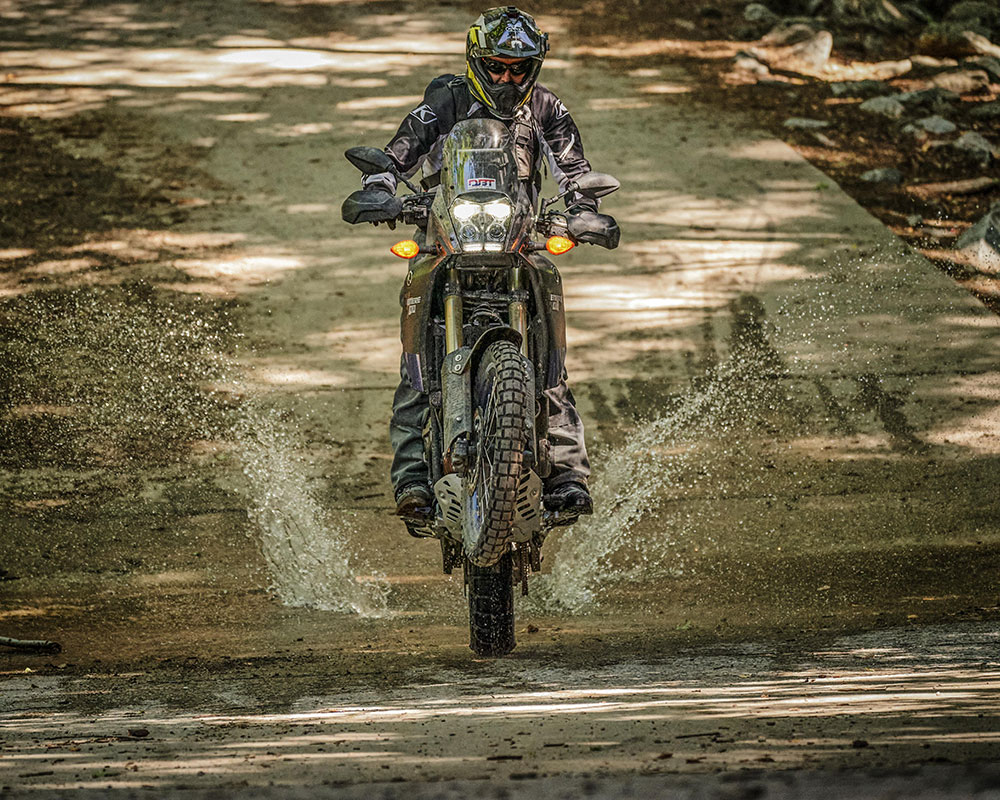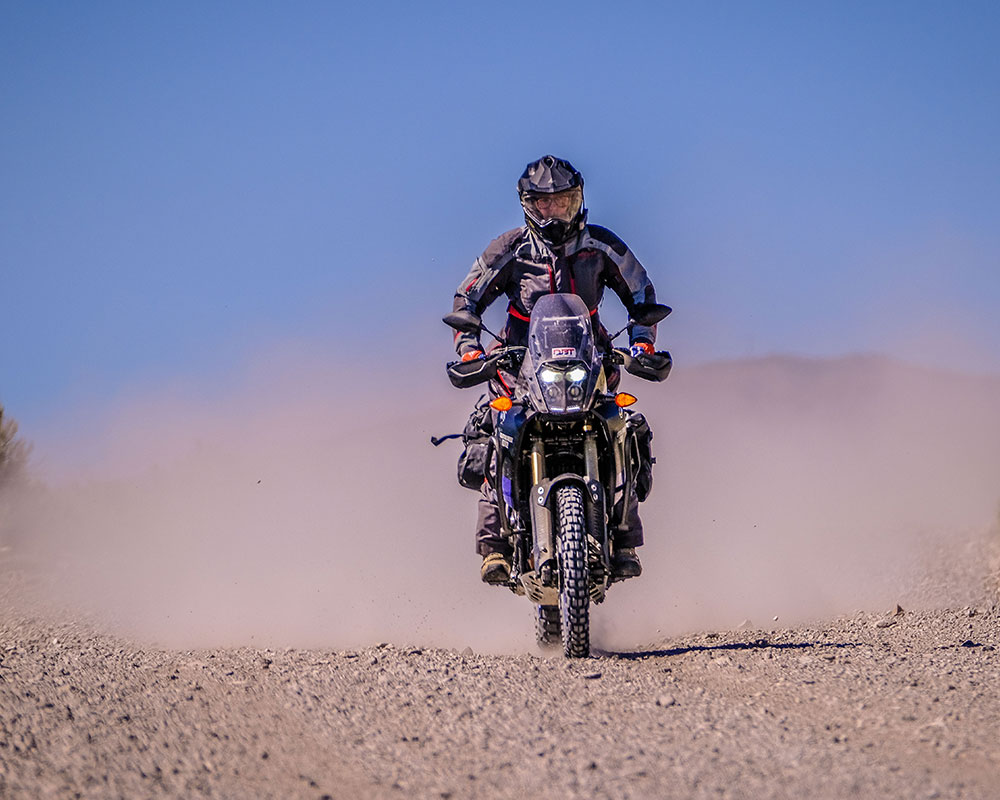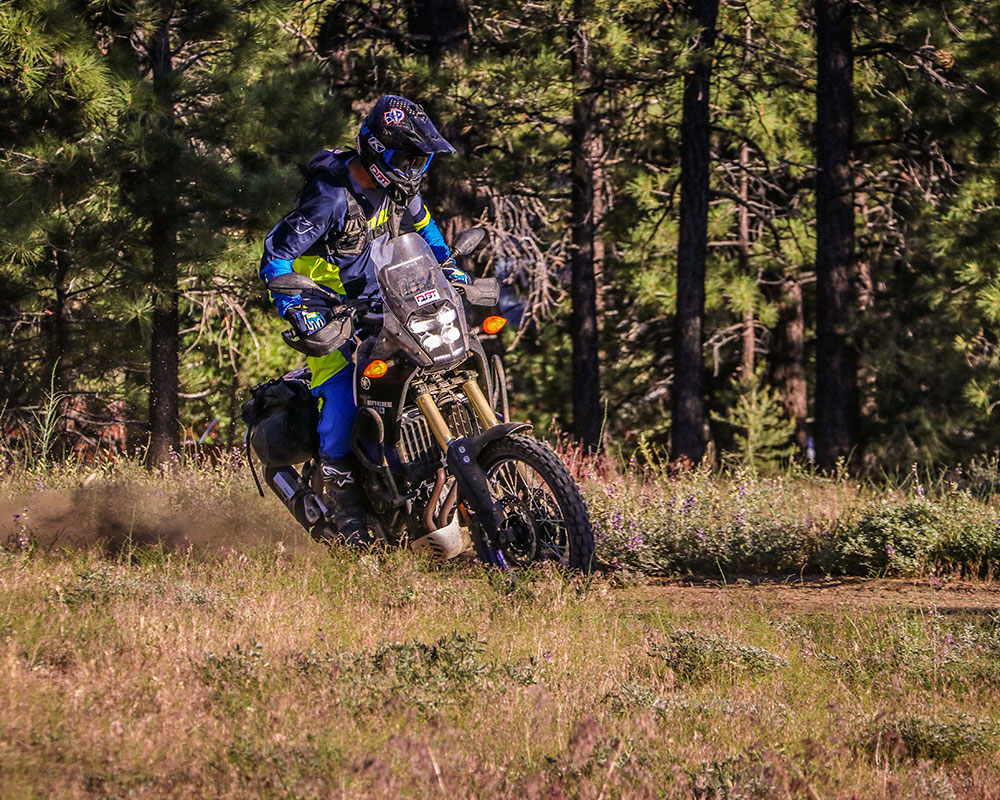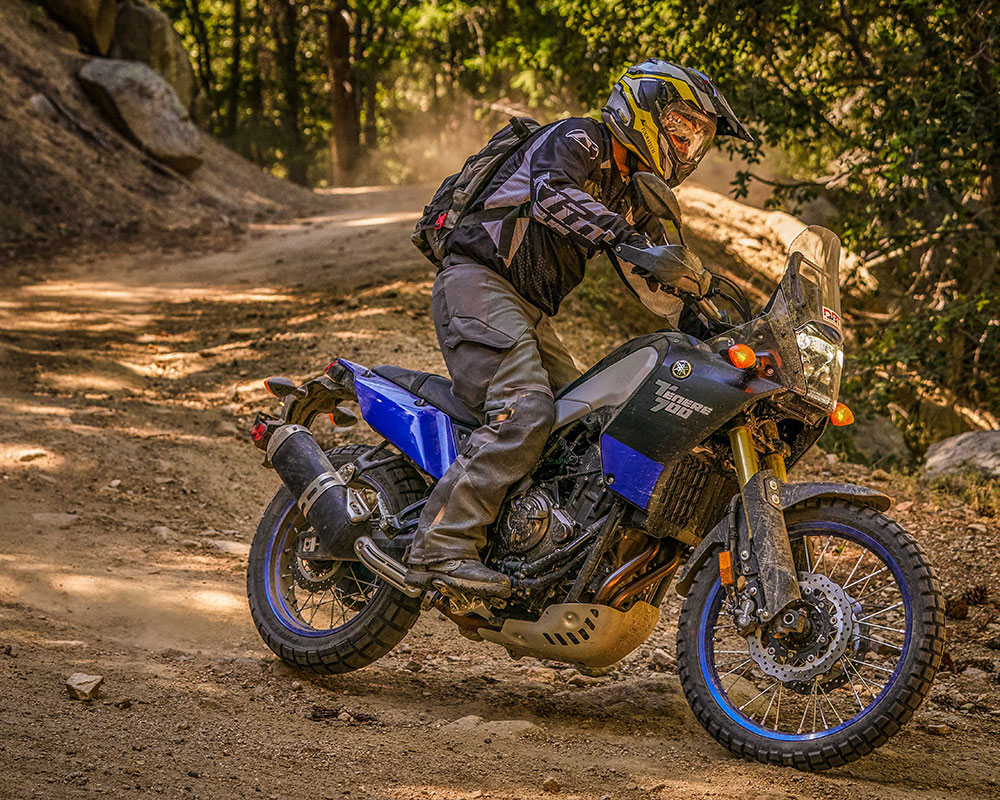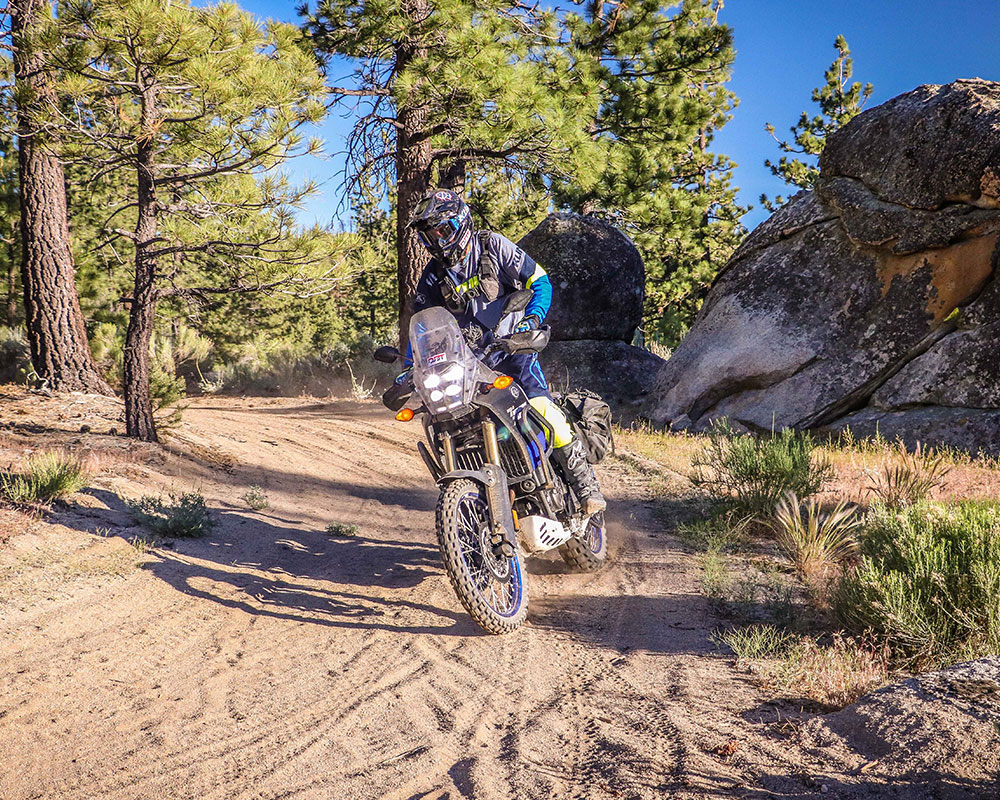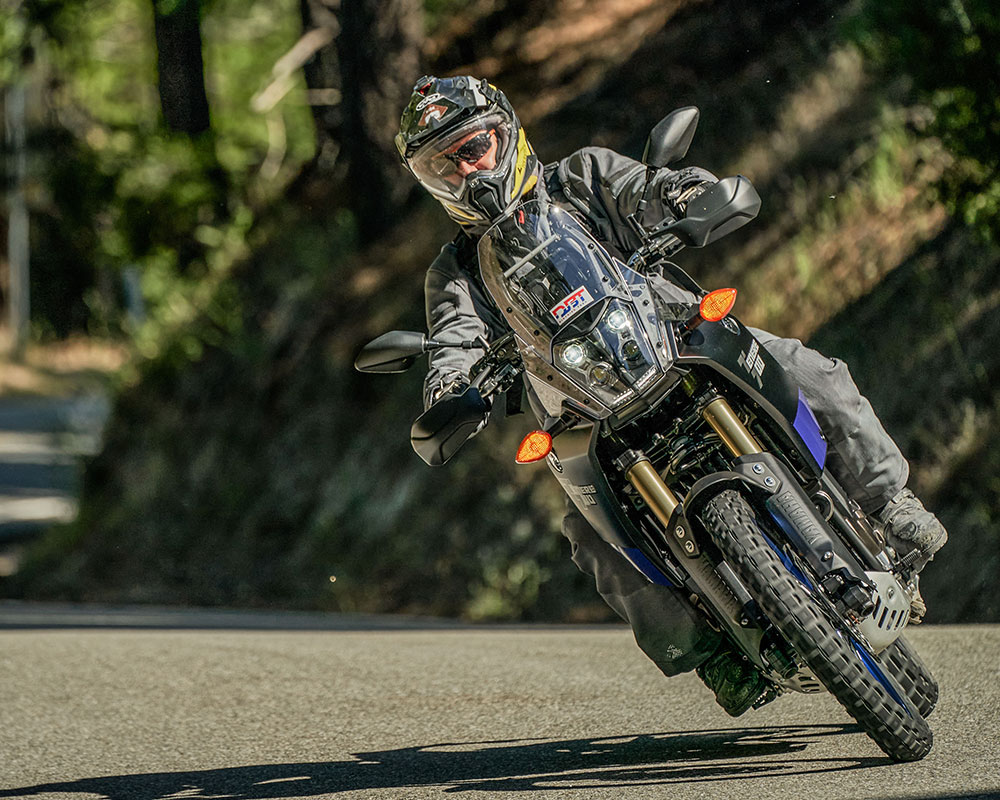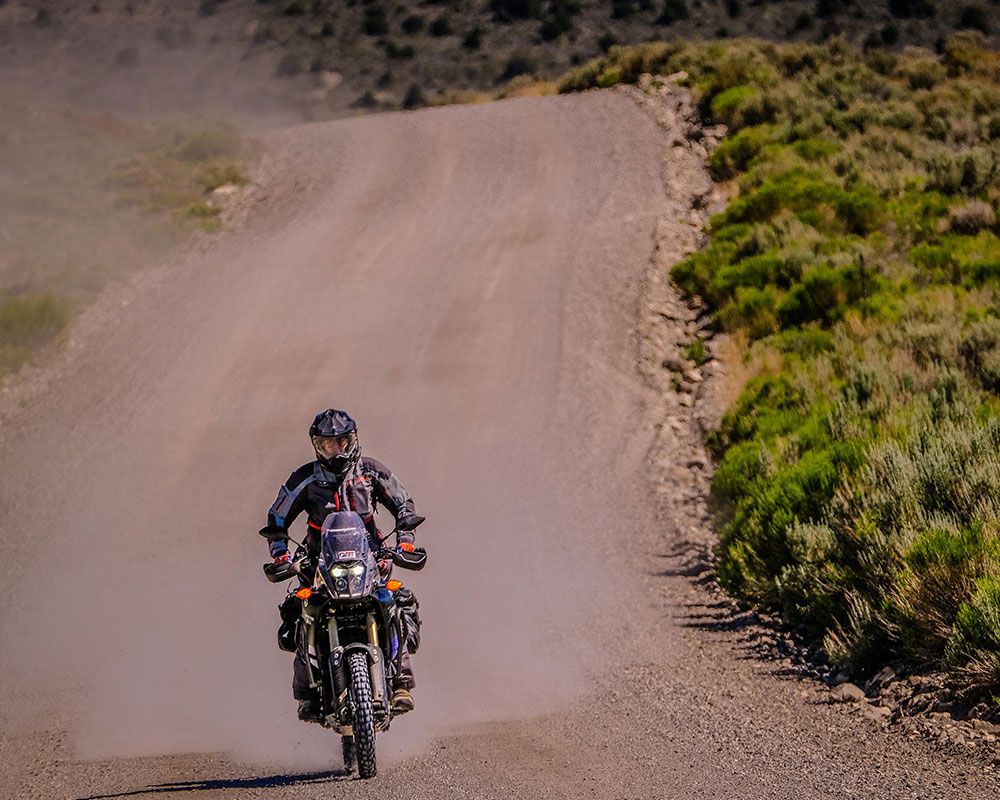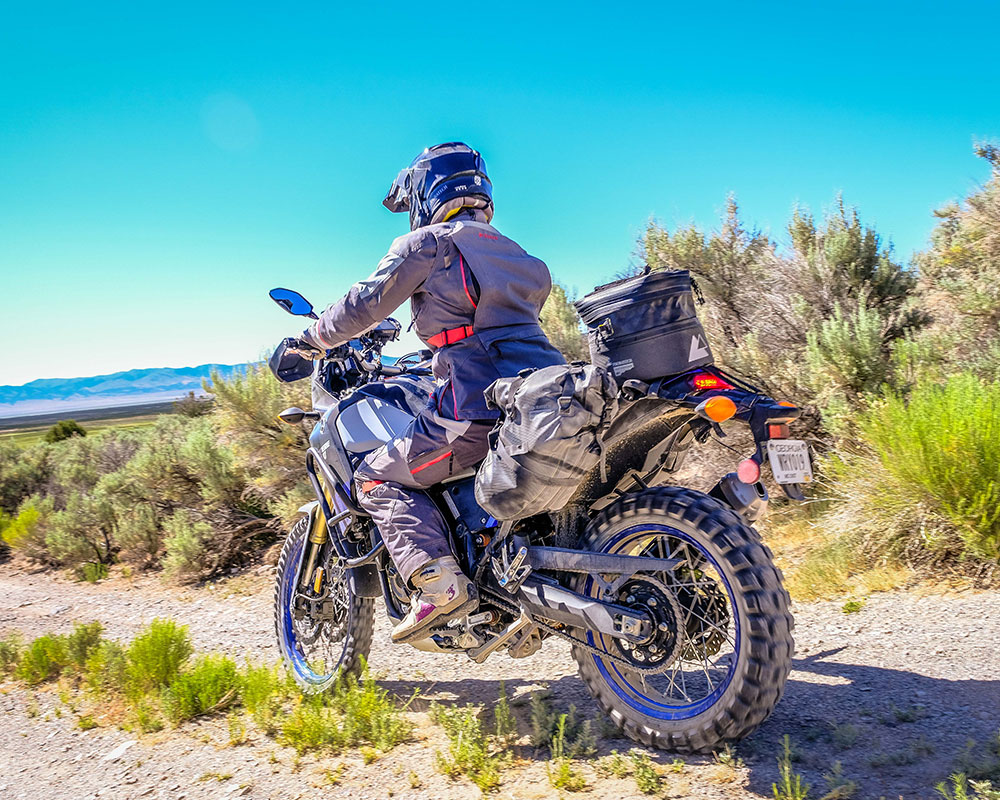2021 Yamaha Tenere 700
MSRP: $9,999.00
- Simplistic without losing much performance because of it.
- Targeted and delivered perfect for the Adventure segment.
- Will run with the best and stay comfortable doing it.
- Did you see the price?
- Higher-end buyers might miss extra electronic features.
- Just a little more fuel capacity, please.
- Slippery, smaller footpegs.
Introduction
- Long awaited Yamaha ADV bike.
It was a long wait for the Ténéré 700, but the US was introduced to the mid-sized Adventure bike from Yamaha with a 2021 model. Originally revealed as a T7 concept machine, it looked like current Rally Raid bodywork wrapped around the company's 700cc parallel twin bike with YZ motocross suspension. Once delivered, we learned that concept was not too far from the final product, but with simplicity and cost consciousness coming along for the ride. With that being said, is it the adventure bike everyone is seeking?
Changes
- All new model for 2021.
- Based off of the MT-07.
An all-new bike has to come from somewhere, and the heart of the Ténéré is the engine from the MT-07. It is a parallel twin that is fuel injected and liquid-cooled. A Crossplane 270-degree firing order has a distinct power character with cylinders that are also placed forward of center in relation to the crank. The transmission is also stacked to make for a shorter engine. The chassis is all-new and designed specifically for the T7. The frame is a steel tubular, double-cradle design with a shortish 62.6-inch wheelbase and a lower 9.5-inches of ground clearance. Suspension boasts KYB components with older generation motocross-spec internals to handle the off-road riding. The forks are 43mm inverted design with 8.3-inches of travel, and the shock has adjustable preload with a remote adjuster and 7.9-inches of travel. Wire-spoke wheels in 21-inch and 18-inch sizes allow for a wide variety of tire choices and strength. The fuel tank is 4.2-gallons and slung low through rally design and styling while incorporating a flatter seat. The fairing includes stylish LED lighting and adequate wind protection.
Power
- Strong, usable power for riders of all experience.
- Fuel-efficient design.
- Smooth shifting and clutch pull.
If there is a sweet spot in the totality of the Ténéré, we’d say the motor has a lot to do with this bike’s success. It is simply strong and usable for any level of rider without the need for electronic aids. The parallel-twin has a smooth controlled power delivery right off of idle and builds like there is built-in traction control when you need it but none when you don’t. Then it keeps building and goes from smooth and torquey character to revvy and aggressively fun. It isn’t going to win any outright horsepower awards but since these bikes, especially when used off-road, make more power than the tire can handle, it may win drag races in the dirt. Power is all you need, when you need it, and fun enough for even experts to be satisfied while novice riders find comfort and usability.
The engine is surprisingly fuel efficient when used normally or even aggressively. But it can get thirsty chasing bigger bikes on open roads. Going from its normal average near 50 MPG to 30 MPG was noticed when going high-speeds into headwinds. Transmission ratios are spot on with a first that makes nasty off-road starts easier and a sixth that lets the legs stretch without too much RPM. The clutch pull is average and control and feel are excellent. Shifting was smooth and got smoother with time, but the throw was a bit longer and some riders complained when they hopped on the Tenere. There is minimal vibration and the sound is pleasant. For real adventure riding, it is hard to find many faults in the performance of the motor. It’s bulky size, especially in the oil sump’s relation to the ground, provided some ground clearance challenges to those that go above average in extreme conditions or to those looking at numbers.
Suspension
- Suspension is spot-on.
- Blends performance and comfort.
- Adjustable suspension components.
Yamaha has been on a roll with getting the suspension right on off-road bikes and we think the Tenere is right on spec here too. With limited travel length compared to normal dirt bikes and even a little less than other adventure machines, don’t let the numbers get in the way of how it really works on real adventure riding. In a quick sentence, this bike is comfortable without suffering one bit on the performance side. Or the exact inverse, it performs great without sacrificing comfort.
The spring rates seem to be right on, and with full adjustability, you can set the bike to favor any type of adventure riding you do. We accomplished this even with average luggage and average rider weight. There is plenty of hold-up without being harsh at all and the compression and rebound settings worked to control the stroke.
In the standard setting, the Yamaha rides like an aggressively set up street bike with a lot of travel. Once off-road, this yields a stiffer feeling ride (you feel the bump before it starts to get absorbed) mostly because the standard spring preload and damping settings are soft enough to have the bike settling in the mid-stroke. It works decent for road stiffness and connectivity, but harsh for the dirt. Yamaha’s off-road setting suggests clicker positions around 7-clicks out from full stiff on all adjustments (11-17 is the standard setting depending on the clicker.) We tried that setting and found the rebound to be a little slow--even if it helped the compression damping additionally. So we kept the stiffer compression setting and opened up the fork and shock’s rebound to around 10-clicks out which found a much more supple feeling and still excellent bottoming resistance. We also nearly maxed out the rear shock’s adjustable preload adjustment for the same reason, getting the most of the suspension stroke–and it worked without altering the handling feel. The T7 will bottom out, but if it does, that means you hit something in a way you shouldn’t on an ADV bike. Of note, the Pirelli Scorpion Rally tires were set at 29F/27R PSI for the off-road and we ran Kenda Big Blocks at 27 PSI F/R which really helps the small bump absorption in the dirt without becoming too wallowly on-road.
Chassis - Handling
- Comforting chassis.
- Dirt-bike-esque cockpit/feel.
Wrapping up the parts into a package is where this Yamaha seems to get another advantage in the adventure scene. All of the parts are solid and they play well with each other through the steel cradle frame. They match up in delivering a bike that is comfortable and easy to use instead of all aggressive all the time or simply not having the performance you’d expect.
The bike feels like what a middleweight ADV bike should and really does not mask its weight then surprise you with it. It’s dirt bike-esque layout and rider triangle are complimented by a thin area at the front of the seat--which is flat and low to make it easier to get a foot on the ground. Stock seat comfort is OK. We actually got our hands on a taller Rally Seat through GYTR ($219) and really liked that, for everything comfort (more cushion) including getting the ever important seat to footpeg distance larger so the knees don’t get folded up too much. Achieving this allows for easier standing while riding, therefore the 700 feels lighter when putting it through its paces in the dirt. The bars have a certain amount of weight in steering that add to the stability of the bike but never enough to make it feel sluggish. It does not gain weight as much as bigger bikes when the engine starts spinning up so riding at a high RPM does not kill the agility. It tracks well with the front wheel and is willing to slide the rear as needed without the quick realisation that you are out of control. The feedback is excellent and never surprising. Some riders noticed some looseness when hitting really high speeds, all things were traced back to either wind buffering or tire characteristics of the Kenda Big Blocks we used on one of our longer rides.
The ground clearance gets brought up as a downside and we don’t feel that is as much of an issue until you are doing things outside of the bike’s intended purpose. The kickstand tab is the lowest point and it can catch on things easier than most. The side stand sensor switch is vulnerable and we did break ours stunting over rocks. Luckily a quick “hotwire” of the switch got things going again, which shines back to the simplicity of the bike. A tougher skid plate should be on order for those riders who inted to ride the Tenere as if it were a smaller dirt bike. We also had some more aggressive riders complain that the footpegs could be a little slippery (we tossed the rubber inserts the moment we hopped on the bike). Also, slightly longer pegs would not hurt anything in their opinion.
We added strap-on soft luggage to the bike (Touratech’s New Extreme Soft Luggage) and were pleased with how the bike handled the load of camping supplies. It didn’t cause any strange handling issues and the attachment points worked and were secure. Our bike also had accessory GYTR Crash Bars (called Engine Guard $323.00) added and we didn’t use them. But they do protect the radiator and the plastic pieces up front so bars like these may be a wise investment if you tip over often.
Brakes are strong and the simplicity of the ABS activation is a single push-button. Though the activation and feel of the ABS, when used, will not impress anyone familiar with more complex systems on most current bikes. It is a bit on the grabby side when first applied and then a little slower in the computer’s control of the wheels, but it gets the job done, at least on-road. Yamaha seems to expect it to be turned off for off-road use and we agree.
The instrumentation is nice looking, basically informative and very easy to use. It tells you most of what you need and little more with a simple interface through the dash or the handlebar mounted switch. There is room for additional items like a GPS as well. The count-up odometer for when you go on reserve can be helpful if you know the final range and we used it a few times. 40-miles was our empty zone. Speaking of range, the bike can go a long way (close to 200 miles) on the 4.2 gallons, or just over 120 miles if you really stress it. We’d like a little more cushion, especially when venturing in the wide-open, high-speed west where fuel can be 220 miles apart frequently. The quad-LED headlights do a respectable job at lighting up the night and can be adjusted to aim as needed.
Conclusion
- Mid-level ADV bike.
- Simply yet effective design.
The adventure market has blown up and it exploded everywhere. Including into a few segments that seemed looking to create the unicorn bike that will do everything. Everything is a broad term and has a different answer depending on who you ask. Some want a huge, fast, monster ADV bike that has dirt pedigree, some want a slicked over street bike with an off-road look, and some even want small displacement/entry level bikes that claim to do it all. But what Yamaha has done is struck middle ground without getting carried away in trying to make a bike into something it couldn’t really be. By being any better at any area in this bike's DNA, it would land outside the box of its main focus. An affordable, simple, high-performance adventure bike. That is what the Ténéré 700 is.
Recent Product Tests
Leave a Reply
